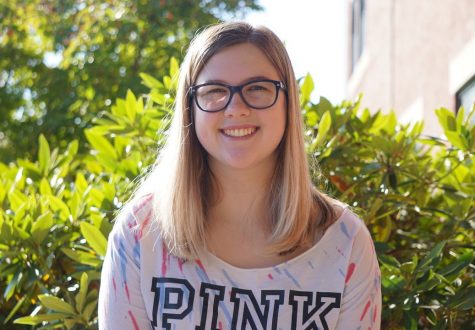CavBlock gets a redesign
Jennifer Given, a World History teacher, takes attendance at the beginning of the CavBlock period. The students on the roster have signed up ahead of time on the PowerSchool Adaptive Scheduler. “It teaches kids more life skills where they need to plan ahead,” said Ford.
October 8, 2019
On Sept. 10, Hollis Brookline adopted a new CavBlock system. This new schedule allows for students to sign up for their desired CavBlock beforehand, eliminating CavBlock sign-in papers.
“We were really looking for ways for students to be able to access support and help in a functional, efficient, and planned way,” said Assistant Principal Lauren DiGennaro. However, with such a sudden change to the structure of CavBlock, the introduction of the Adaptive Scheduler raised a few questions.
During the 2018-2019 school year, CavBlock had been set up with paper sheets used to sign in and out of the assigned classroom. It was designed to be an enrichment and support period for students to get extra help, relax with friends, or finish homework. It was a free flowing period which allowed students to float from room to room, but the administration struggled to find an effective method of tracking students during this time. Additionally, students seeking extra help often found it quite difficult to receive that help because many rooms became overcrowded and difficult to manage.
In Nov. 2018, the Hollis Brookline Cooperative School Board sat down to discuss the CavBlock system and introduced the new idea of the Adaptive Scheduler. Last year, they started gathering information from teachers to see where improvements could be made. DiGennaro, along with other administrators, even visited local schools to try and understand how the Adaptive Scheduler worked and affected the schools.
“[The other schools] had that same kind of free flowing system the year before,” said DiGennaro, “It wasn’t as efficient for them to see teachers and access support as after [the Adaptive Scheduler was implemented].”
There have been mixed emotions towards this new system among the students. One student, Rachel Lindof ‘22, felt particularly opposed to this new system and created a petition to stop the progression. “CavBlock was relied upon by so many of us to get work we needed to get done,” said Lindof, “All [this new system] is going to do is create a loss in our productivity.”
Lindof created the petition after sitting with her friends at work one night and discussing how they thought enacting change was better than complaining. On Sept. 7, Lindof released the petition, and it quickly caught the attention of the community. Within a few hours, it had received hundreds of signatures and was later posted to the Hollis-Brookline Community Page on Facebook. It accrued over 600 signatures comprising of both parents and students.
While many students feel that this petition is going to be the game changer, Ethan Ford ‘22, feels it lost its legitimacy.“The majority of the people on Facebook are parents, and obviously that’s a very biased point-of-view,” said Ford. “The kids who would be affected negatively are the ones who didn’t work.”
Many students found it rather difficult to focus during CavBlock under the old model. “Kids were laughing, yelling, screaming in my room,” said Ford. “I can now go to a place designated for work and it will be dead silent…[Now,] if I were to go to the Accel Algebra 2 Learning Lab, all of the math teachers who teach that subject are there ready to help me immediately.”
With students finally getting into the groove of this new CavBlock system, DiGennaro is looking for active feedback along the way. “We are open to understanding if there are barriers, adjusting it as needed, and going from there” said DiGennaro. She suggests that students continue to come forward and bring their concerns and input to administration. While adjustments will be made, it seems that this new CavBlock is here to stay.














